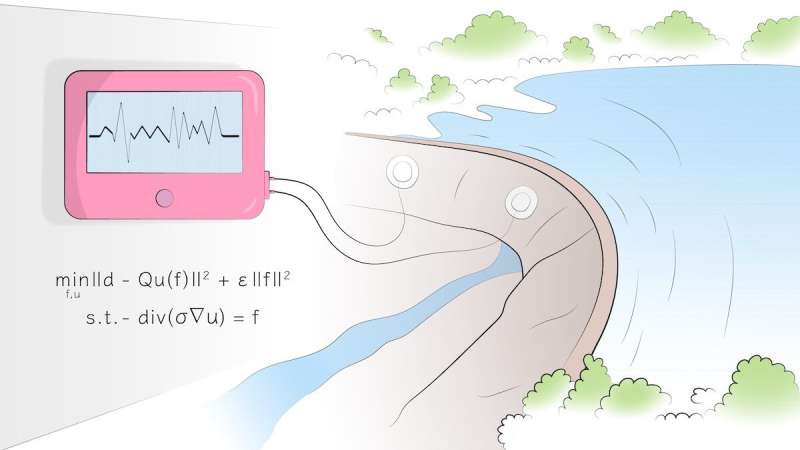New mathematical method aids water prospecting and dam security

Scientists from Skoltech and St. Petersburg State University have proposed a mathematical method for interpreting data on underground water flows. The new technique is more efficient and provides more accuracy in imaging fluids for planning construction works, inspecting dams for integrity, and locating water reservoirs for agriculture and private consumption in dry areas. The study is published in IEEE Transactions on Geoscience and Remote Sensing.
Detecting subsurface water flows is important for construction safety, dam monitoring, and groundwater prospecting. Underground fluid flows constitute a hazard for the foundation elements of buildings and subway systems, as well as an early warning of an impending dam breach. In dry climates, such as in Spain, Israel, Australia, or the south of Russia, knowing where water flows under the ground offers a way to tap into this resource for agricultural, industrial, and private needs.
The past decade has seen the rise of a new approach to underground water flow imaging: self-potential mapping. The underlying premise is that as water seeps through porous rock, it generates electrical potential, which indicates its presence.
The main challenge with self-potential mapping is that while researchers can reliably pick up these electrical signals, making sense of them and localizing actual underground flows has proved tricky. Until now, no satisfactory mathematical method has been available for processing large amounts of self-potential data for areas with rough terrain.
In the recent paper in IEEE TGRS, a Russian research team from Skoltech and St. Petersburg State proposed such a method. It is capable of rapidly processing many measurements and precisely accounting for the complex geometry of the studied domain. The latter is particularly important for identifying dam breaches, because dam geometry strongly affects the electrical potential.
"The ultimate result is that the method greatly improves the quality of geophysical interpretation," the study's first author, Mikhail Malovichko of Skoltech, commented. "Technically speaking, we are increasing the accuracy of the inverse problem. Considering the improvement in subsurface imaging, we believe this approach has great potential within the industry."
More information: M.S. Malovichko et al, Application of optimal control to inversion of self-potential data: theory and synthetic examples, IEEE Transactions on Geoscience and Remote Sensing (2021). DOI: 10.1109/TGRS.2021.3121538




















